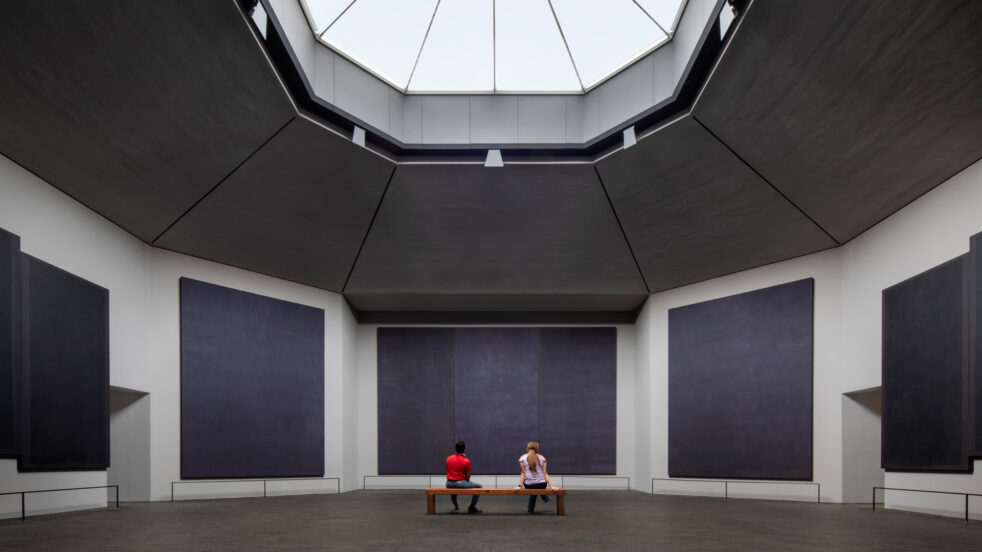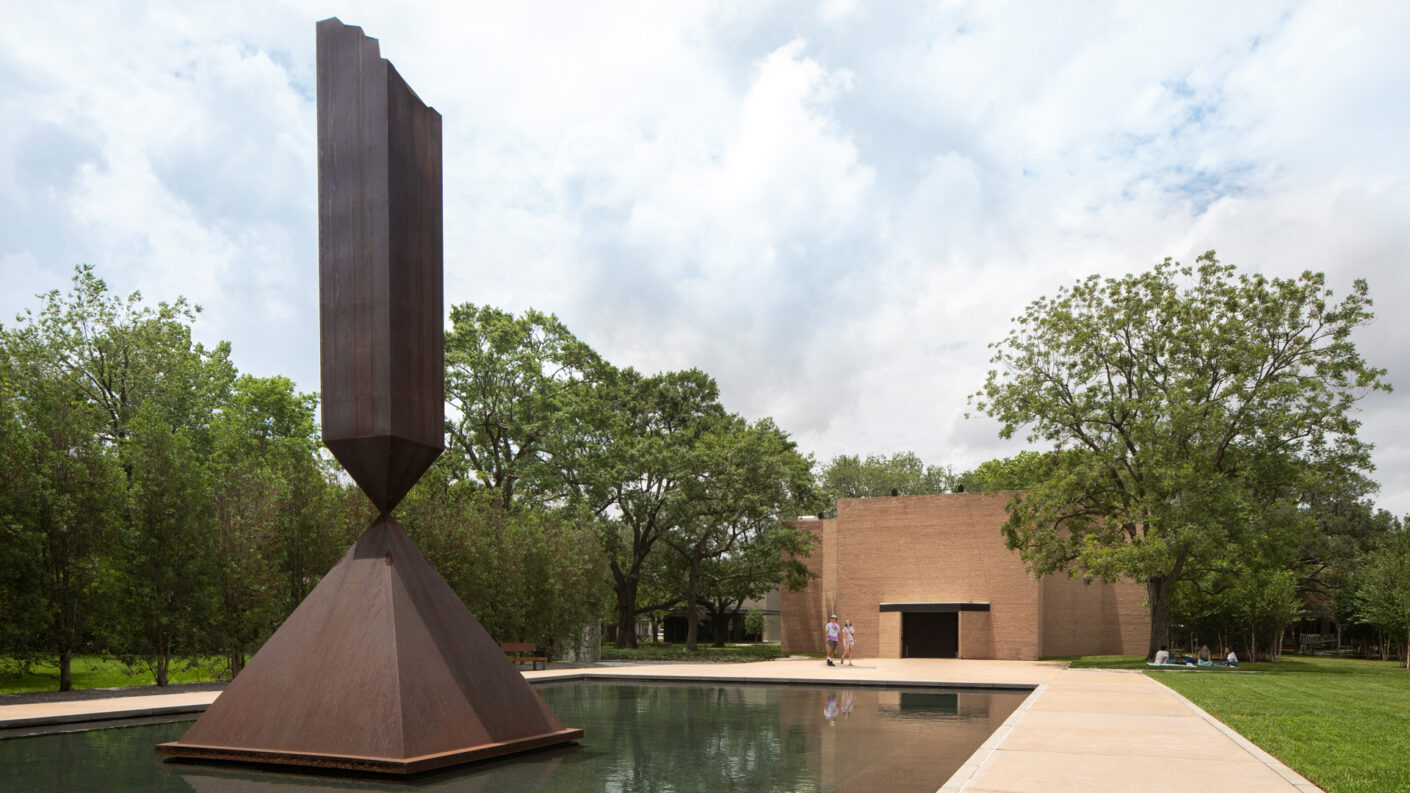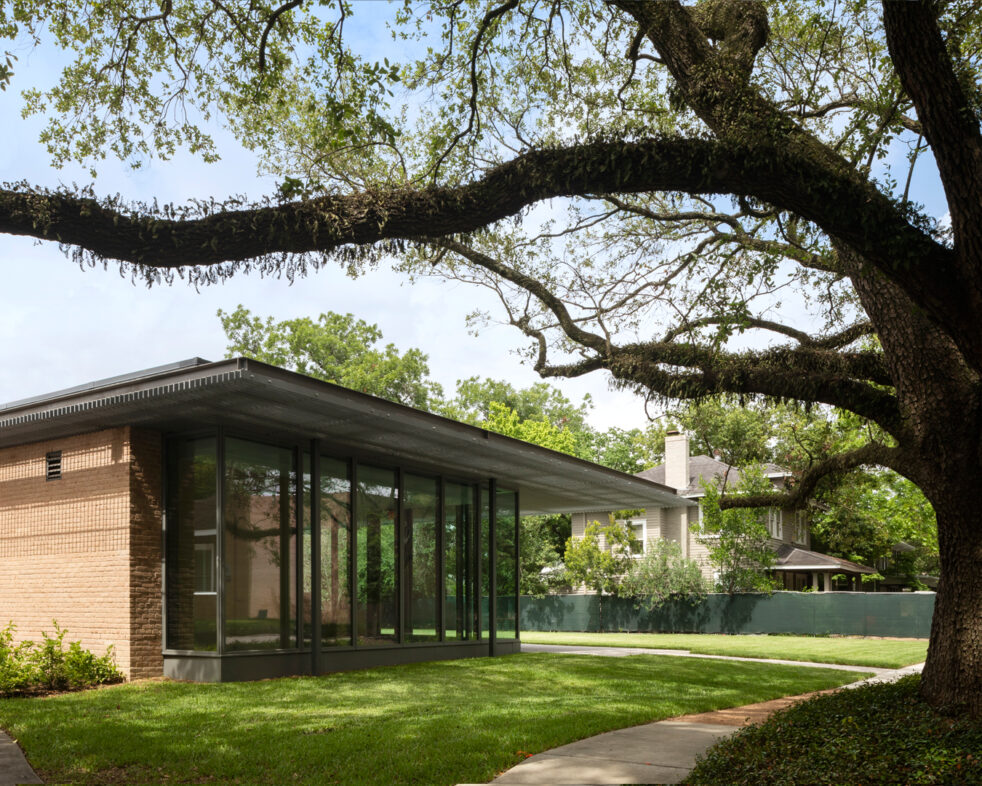After more than a year of closure for restoration work, Houston’s beloved Rothko Chapel is reopening to the public. First dedicated in 1971 by philanthropists John and Dominique de Menil as a sacred space for interfaith celebration and social engagement, the historic structure displays 14 of Mark Rothko’s monumental canvases within an octagonal space crowned by a skylight. Though he collaborated on the building’s design with Philip Johnson, Howard Barnstone, and Eugene Aubry, Rothko died of suicide in 1970 without ever visiting Houston. The architects ended up partially obscuring the chapel’s overhead oculus to protect Rothko’s paintings from harsh Texas sunlight, making the nuances of his work—particularly their black, purple, and crimson hues—difficult to perceive in the darkness.
Thanks to an intervention by New York firm Architecture Research Office (ARO), obstacles to experiencing Rothko’s work have mostly been removed. The firm, whose notable projects include designing Knoll’s flagship Manhattan showroom and restoring Donald Judd’s historic home studio in SoHo, partnered with lighting specialists George Sexton Associates to install a laminated-glass skylight that invites light inward while shielding the canvases from sun damage. A reconfiguration of the building’s entryway, meanwhile, grants visitors unimpeded access to wander, wonder, and experience the work as they see fit. “There are subtleties to the brushstroke, to the color, to the reflectivity of the paint, that you really didn’t see in inadequate light,” ARO co-founder Stephen Cassell tells AD. “The paintings will have more subtle depth to them and more to discover over time.”
ARO’s scope also includes spearheading Opening Spaces, a $30 million masterplan to expand the chapel’s campus through a collaboration with landscape architects Nelson Byrd Woltz. Special sensitivity was given to the dynamic between the chapel and Broken Obelisk (1963–67), a nearby sculpture by Barnett Newman that overlooks a reflecting pool. Dedicated to Martin Luther King Jr, the artwork embodies the Rothko Chapel’s longtime commitment to human rights and social justice. “The Chapel was built with a vision that brought together modern art and a sacred space to promote human unity, solidarity, justice, and peace,” says Christopher Rothko, son of Mark and chairman of Opening Spaces. “The universality of this vision is relevant for us today and will remain so for generations to come.”


